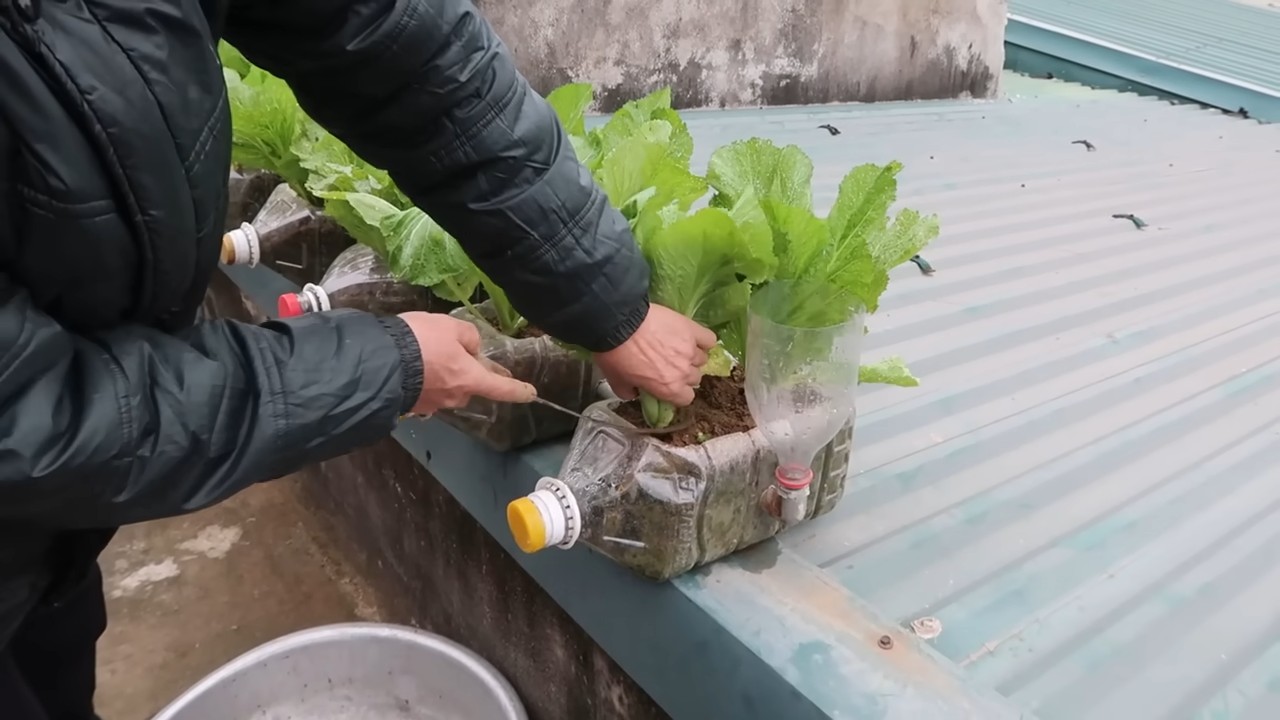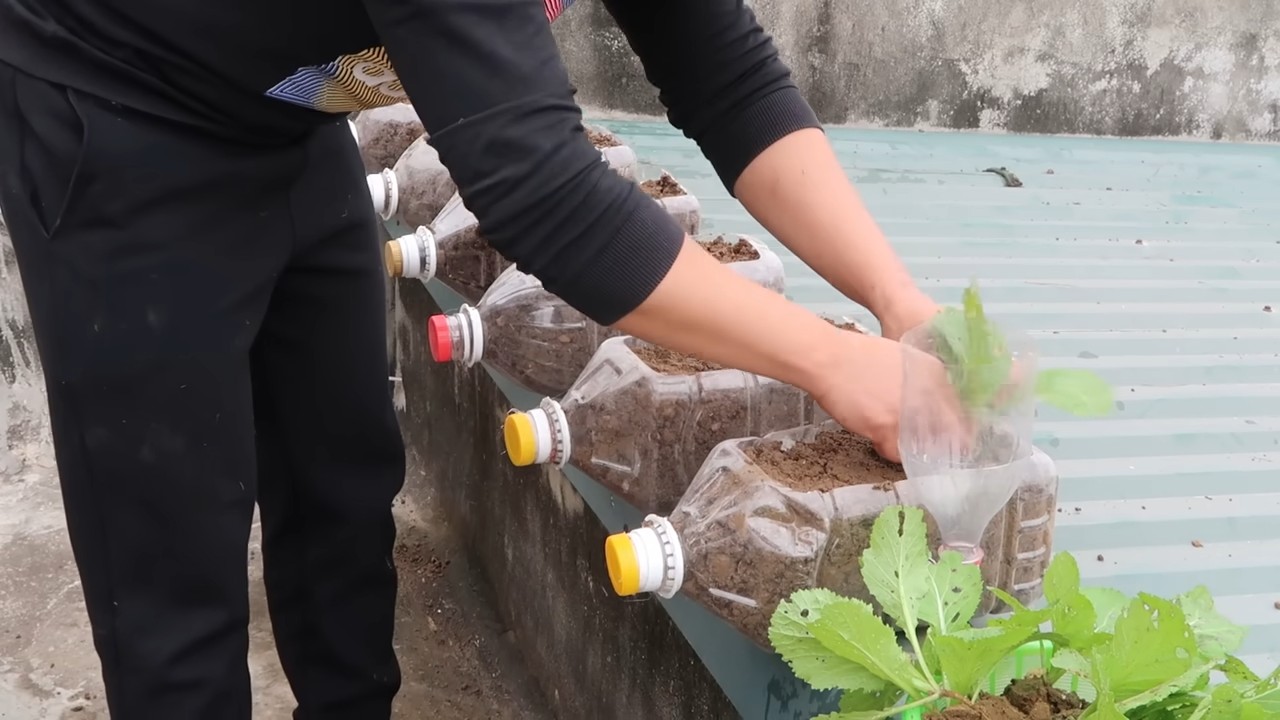Easy vegetable gardening hacks are your secret weapon to a bountiful harvest, even if you think you have a “brown thumb”! Let’s face it, the idea of growing your own food is incredibly appealing. Imagine stepping outside your back door to pluck fresh tomatoes for a salad or snipping herbs to season your dinner. But the reality of gardening can sometimes feel overwhelming, right? Don’t worry, I’m here to tell you it doesn’t have to be!
For centuries, people have cultivated their own gardens, not just for sustenance, but also for the sheer joy of connecting with nature. From the ancient hanging gardens of Babylon to the victory gardens of World War II, growing your own food has always been a symbol of resilience and self-sufficiency. But in today’s fast-paced world, who has the time for complicated gardening techniques?
That’s where these easy vegetable gardening hacks come in! I’m going to share some simple, clever tricks that will save you time, money, and effort, while still yielding amazing results. Whether you’re a complete beginner or a seasoned gardener looking for new ideas, these DIY tips will help you maximize your garden’s potential and enjoy the delicious rewards of your labor. Get ready to transform your backyard (or even your balcony!) into a thriving edible oasis!

Easy Vegetable Gardening Hacks for a Bountiful Harvest
Okay, let’s dive into some super simple vegetable gardening hacks that will seriously boost your yield and make your gardening life a whole lot easier. I’m all about working smarter, not harder, and these tips are exactly that!
Maximizing Space with Vertical Gardening
If you’re like me and have limited space, vertical gardening is your new best friend. It’s amazing how much you can grow when you go up instead of out!
* Benefits: Saves space, improves air circulation, reduces soil-borne diseases, and makes harvesting easier.
* Ideal Vegetables: Tomatoes, cucumbers, beans, peas, strawberries, herbs, and even some leafy greens.
* Materials: Pallets, trellises, hanging baskets, stacked planters, repurposed gutters, or even old ladders.
Building a Simple Pallet Garden
This is one of my favorite projects because it’s so cheap and easy!
1. Find a Pallet: Look for a heat-treated pallet (marked with “HT”) rather than one that’s chemically treated. You can often find them for free at local businesses.
2. Clean the Pallet: Give it a good scrub with soap and water to remove any dirt or debris.
3. Reinforce the Back: Staple or nail landscape fabric to the back of the pallet to create pockets for the soil. Make sure the fabric is securely attached to prevent it from sagging.
4. Fill the Pockets: Fill each pocket with a good quality potting mix. I like to add some compost for extra nutrients.
5. Plant Your Vegetables: Choose vegetables that are well-suited for vertical growing, like herbs, lettuce, or strawberries.
6. Water Regularly: Pallet gardens tend to dry out quickly, so water them frequently, especially during hot weather.
Using Trellises for Climbing Vegetables
Trellises are perfect for supporting climbing vegetables like tomatoes, cucumbers, and beans.
1. Choose a Trellis: There are tons of options available, from simple bamboo stakes to elaborate metal structures. Pick one that suits your style and the size of your plants.
2. Install the Trellis: Place the trellis near your plants, making sure it’s securely anchored in the ground.
3. Train Your Plants: As your plants grow, gently guide them onto the trellis and tie them loosely with twine or plant clips.
4. Prune Regularly: Prune your plants to encourage vertical growth and improve air circulation.
Improving Soil Health with Compost and Mulch
Healthy soil is the foundation of a successful vegetable garden. Compost and mulch are two of the easiest ways to improve your soil’s health and fertility.
* Compost Benefits: Adds nutrients, improves drainage, retains moisture, and suppresses weeds.
* Mulch Benefits: Retains moisture, suppresses weeds, regulates soil temperature, and prevents soil erosion.
* Compost Materials: Kitchen scraps (vegetable peels, coffee grounds, eggshells), yard waste (leaves, grass clippings), and shredded paper.
* Mulch Materials: Straw, wood chips, shredded bark, grass clippings, or even newspaper.
Making Your Own Compost
Don’t be intimidated by composting! It’s easier than you think, and it’s a fantastic way to reduce waste and create nutrient-rich soil for your garden.
1. Choose a Compost Bin: You can buy a compost bin or build your own. A simple pile in a corner of your yard will also work.
2. Layer Your Materials: Alternate layers of “green” materials (kitchen scraps, grass clippings) and “brown” materials (leaves, shredded paper).
3. Keep it Moist: The compost pile should be damp, like a wrung-out sponge. Water it regularly if needed.
4. Turn the Pile: Turn the compost pile every week or two to aerate it and speed up the decomposition process.
5. Harvest Your Compost: After a few months, the compost will be dark and crumbly. It’s ready to use in your garden!
Applying Mulch to Your Garden Beds
Mulching is one of the simplest things you can do to improve your garden’s health.
1. Prepare the Soil: Remove any weeds from your garden beds.
2. Apply the Mulch: Spread a 2-3 inch layer of mulch around your plants, keeping it away from the stems to prevent rot.
3. Water Thoroughly: Water the mulch after applying it to help it settle in.
4. Replenish as Needed: Replenish the mulch as it decomposes throughout the growing season.
Watering Wisely
Proper watering is crucial for healthy vegetable growth. Overwatering and underwatering can both lead to problems.
* Watering Tips: Water deeply and less frequently, water in the morning, avoid watering the foliage, and use a soaker hose or drip irrigation.
* Rainwater Harvesting: Collect rainwater in barrels or containers to save water and reduce your water bill.
* Watering Schedule: Adjust your watering schedule based on the weather and the needs of your plants.
Creating a Simple Rainwater Harvesting System
Collecting rainwater is a great way to conserve water and provide your plants with a natural source of hydration.
1. Choose a Container: Use a rain barrel, large plastic container, or even a trash can.
2. Position the Container: Place the container under a downspout to collect rainwater.
3. Install a Screen: Cover the top of the container with a screen to prevent debris and insects from entering.
4. Add a Spigot: Install a spigot near the bottom of the container to easily access the water.
5. Use the Water: Use the collected rainwater to water your plants, wash your car, or clean your outdoor furniture.
Using Soaker Hoses for Efficient Watering
Soaker hoses deliver water directly to the roots of your plants, minimizing water waste and reducing the risk of fungal diseases.
1. Lay the Soaker Hose: Lay the soaker hose along your garden beds, weaving it between your plants.
2. Connect to a Water Source: Connect the soaker hose to a garden hose or faucet.
3. Adjust the Water Pressure: Adjust the water pressure to a low setting to allow the water to seep slowly into the soil.
4. Water Regularly: Water your plants regularly, adjusting the watering time based on the weather and the needs of your plants.
Pest Control the Natural Way
Nobody wants pests munching on their precious vegetables! Luckily, there are plenty of natural ways to keep pests at bay without resorting to harsh chemicals.
* Companion Planting: Plant certain vegetables and herbs together to repel pests and attract beneficial insects.
* Handpicking: Remove pests by hand and drop them into a bucket of soapy water.
* Neem Oil: Spray your plants with neem oil to control a wide range of pests.
* Diatomaceous Earth: Sprinkle diatomaceous earth around your plants to kill crawling insects.
Companion Planting for Pest Control
Companion planting is a fantastic way to create a healthy and balanced garden ecosystem.
1. Research Companion Plants: Research which plants are beneficial to each other. For example, basil repels tomato hornworms, and marigolds repel nematodes.
2. Plant Companion Plants Together: Plant your chosen companion plants near each other in your garden beds.
3. Observe Your Garden: Observe your garden regularly to see how the companion plants are affecting the pest population.
4. Adjust as Needed: Adjust your planting strategy as needed based on your observations.
Using Neem Oil for Pest Control
Neem oil is a natural insecticide that’s effective against a wide range of pests.
1. Dilute the Neem Oil: Dilute the neem oil according to the instructions on the label.
2. Spray Your Plants: Spray your plants thoroughly, making sure to cover all surfaces, including the undersides of the leaves.
3. Repeat as Needed: Repeat the treatment every week or two, or as needed to control pests.
4. Avoid Spraying in Direct Sunlight: Avoid spraying your plants in direct sunlight, as this can cause leaf burn.
Seed Starting Made Easy
Starting your own seeds is a great way to save money and get a head start on the growing season.
* Seed Starting Supplies: Seed starting trays, potting mix, grow lights, and a heat mat.
* Seed Starting Schedule: Start your seeds indoors 6-8 weeks before the last expected frost.
* Transplanting Seedlings: Harden off your seedlings before transplanting them outdoors.
Creating a Simple Seed Starting Setup
You don’t need a fancy setup to start your own seeds. A simple setup with basic supplies will do the trick.
1.

Conclusion
So, there you have it! These easy vegetable gardening hacks aren’t just about saving time and money; they’re about transforming your gardening experience into something truly enjoyable and rewarding. Imagine spending less time weeding and watering, and more time harvesting fresh, delicious vegetables right from your own backyard. These aren’t just shortcuts; they’re smart cuts that allow you to maximize your yield and minimize the effort required.
Think about the satisfaction of knowing you’re growing your own food, reducing your carbon footprint, and enjoying the freshest possible ingredients. These hacks empower you to do just that, regardless of your gardening experience or the size of your space. Even if you only have a small balcony, you can still implement many of these techniques to create a thriving mini-garden.
One of the most compelling reasons to embrace these hacks is their adaptability. Feel free to experiment and tailor them to your specific needs and preferences. For example, if you’re using the egg carton seedling starter hack, try different types of soil mixes to see what works best for your chosen vegetables. Or, if you’re creating a DIY self-watering system, consider using recycled plastic bottles of varying sizes to accommodate different plant needs. You could even add a small amount of liquid fertilizer to the water reservoir for an extra boost of nutrients.
Don’t be afraid to get creative and personalize these hacks to suit your unique gardening style. Perhaps you want to build a raised garden bed using reclaimed wood, or create a vertical garden using repurposed pallets. The possibilities are endless! The key is to embrace the spirit of experimentation and have fun with the process.
These easy vegetable gardening hacks are more than just tips and tricks; they’re a gateway to a more sustainable and fulfilling lifestyle. They allow you to connect with nature, nourish your body, and reduce your reliance on store-bought produce. And the best part is, they’re accessible to everyone, regardless of their budget or experience level.
We strongly encourage you to try these hacks in your own garden and see the difference they can make. Start small, experiment with different techniques, and don’t be afraid to make mistakes. Gardening is a learning process, and every failure is an opportunity to grow (pun intended!).
Once you’ve tried these hacks, we’d love to hear about your experience! Share your successes, your challenges, and any variations you’ve come up with in the comments below. Let’s create a community of gardeners who are passionate about growing their own food and sharing their knowledge with others. Together, we can make vegetable gardening more accessible, enjoyable, and rewarding for everyone. So, get out there, get your hands dirty, and start growing your own delicious vegetables today!
Frequently Asked Questions (FAQ)
What if I don’t have a lot of space for a garden?
That’s perfectly fine! Many of these easy vegetable gardening hacks are designed for small spaces. Consider vertical gardening techniques, such as using hanging baskets, wall planters, or repurposed pallets to create a vertical garden. You can also grow vegetables in containers on balconies, patios, or even windowsills. Choose compact varieties of vegetables that are well-suited for container gardening, such as bush beans, dwarf tomatoes, and leafy greens. The key is to maximize your available space and choose plants that will thrive in your specific environment.
How do I know which vegetables to plant in my area?
The best way to determine which vegetables to plant is to consult your local planting calendar or gardening resources. These resources will provide information on the optimal planting times for different vegetables based on your region’s climate and growing season. You can also talk to experienced gardeners in your area or visit your local nursery for advice. Consider factors such as the amount of sunlight your garden receives, the type of soil you have, and the average temperatures in your area when choosing your vegetables.
What if I don’t have a green thumb?
Don’t worry! Gardening is a skill that can be learned over time. Start with easy-to-grow vegetables such as lettuce, spinach, radishes, and herbs. These vegetables are relatively low-maintenance and can tolerate a wider range of growing conditions. Focus on providing your plants with adequate sunlight, water, and nutrients, and be patient. Don’t be afraid to make mistakes 鈥?they’re part of the learning process. There are plenty of online resources and gardening books that can provide you with guidance and support.
How often should I water my vegetables?
The frequency of watering depends on several factors, including the type of vegetable, the weather conditions, and the type of soil you have. As a general rule, water your vegetables deeply and less frequently, rather than shallowly and more often. This encourages the roots to grow deeper, making the plants more drought-tolerant. Check the soil moisture regularly by sticking your finger into the soil. If the top inch of soil feels dry, it’s time to water. Avoid overwatering, as this can lead to root rot.
How do I deal with pests and diseases in my vegetable garden?
Prevention is key when it comes to pests and diseases. Choose disease-resistant varieties of vegetables, practice crop rotation, and keep your garden clean and free of debris. Regularly inspect your plants for signs of pests or diseases. If you spot any problems, take action immediately. There are many organic pest control methods you can try, such as using insecticidal soap, neem oil, or introducing beneficial insects to your garden. For diseases, remove and destroy any infected plants to prevent the spread of the disease.
Can I use these hacks for organic gardening?
Absolutely! These easy vegetable gardening hacks can be easily adapted for organic gardening. Use organic soil amendments, such as compost and manure, to improve soil fertility. Avoid using synthetic fertilizers and pesticides. Instead, rely on natural methods of pest and disease control. Choose organic seeds and seedlings whenever possible. By following these practices, you can create a healthy and sustainable organic vegetable garden.
What are some variations I can try with these hacks?
There are endless possibilities for variations! For the coffee ground fertilizer hack, you can also use tea leaves or eggshells as natural fertilizers. For the DIY self-watering system, you can experiment with different types of containers and wicking materials. For the weed control hack, you can use other types of mulch, such as straw, wood chips, or shredded leaves. The key is to be creative and adapt the hacks to your specific needs and preferences. Don’t be afraid to experiment and see what works best for you.
How can I share my experience with these hacks?
We encourage you to share your experience with these easy vegetable gardening hacks in the comments section below. You can also share your photos and videos on social media using relevant hashtags, such as #easyvegetablegardeninghacks, #diygardening, and #growyourownfood. We’d love to see your successes, your challenges, and any variations you’ve come up with. By sharing your experience, you can inspire others to try these hacks and create a community of gardeners who are passionate about growing their own food.





Leave a Comment